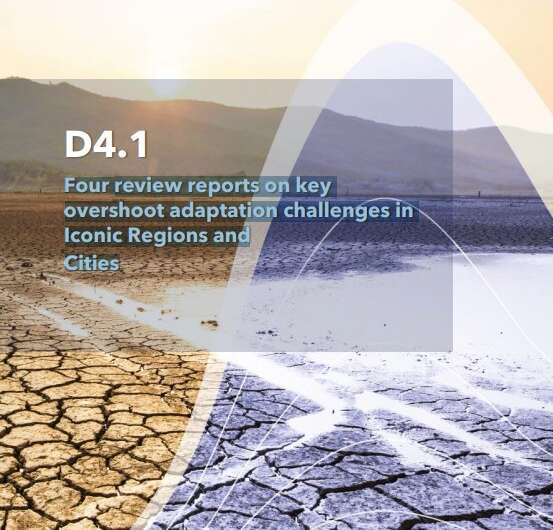This article has been reviewed according to Science X's editorial process and policies. Editors have highlighted the following attributes while ensuring the content's credibility:
fact-checked
trusted source
proofread
If we go over 1.5 ℃, then what?

Based on current emissions trajectories, chances are that our planet will exceed the Paris Agreement's 1.5 ℃ global warming threshold. Even exceeding this temperature temporarily could end up significantly limiting our ability to adapt to climate change, and this is especially true for the world's vulnerable regions.
"If temperatures rise over this limit, there is still an option we can bring them back down again if we can get to net zero emissions and get carbon out of the atmosphere. But it's really important for people to recognize that some of the impacts that occur as a consequence of these higher temperatures—like sea level rise for example—may not be reversible. So, policy makers need to have this in mind. Reducing our emissions buys us so much on the adaptation front," observes Prof. Carl-Friedrich Schleussner of Humboldt-Universität zu Berlin, Germany, in a news item posted on the "Presseportal" website.
The university is the coordinator of the PROVIDE project that is delivering information on different climate scenarios and their respective impacts in the context of adaptation through an innovative web tool called the Climate Risk Dashboard.
Different, yet the same
A report published by PROVIDE now looks at adaptation challenges in four regions and cities: Nassau (Bahamas), Norway's Bodø (Arctic Fennoscandia), Lisbon Metropolitan Area (Iberian Mediterranean) and Islamabad (Indus Basin). Although very different, these four vulnerable regions are all experiencing the consequences of climate change, including more frequent and more severe weather events such as deadly heatwaves, forest fires, flooding, landslides and avalanches.
Another common feature in these regions is that the impacts of climate change are exacerbated by social inequalities and the lack of financial and human capital. Urbanization and migration are also making adaptation more challenging, as is the absence of adequate adaptation governance and incentives.
"There are also significant similarities between the adaptation challenges faced by the iconic cities," states the report. "In all four cities, vulnerability to various climatic risks have increased because of anthropogenic activity, such as the urbanization of coastal areas, construction leading to discontinuity of green-blue structures, and the intensity of the built-up space. All four places have possibilities to address their respective climatic risks, but they also face challenges related to a high degree of private land ownership along with governance regimes without sufficient coherence for the needs related to climate adaptation and mitigation."
The PROVIDE (Paris Agreement Overshooting—Reversibility, Climate Impacts and Adaptation Needs) report was developed in close collaboration with stakeholders from the four regions, resulting in locally grounded insights on climate risks and adaptation challenges. In the "Presseportal" news item, Prof. Schleussner concludes that incorporating potential overshoots into adaptation planning is a must if we are to avoid poor or inadequate adaptation.
More information: Four review reports on key overshoot adaptation challenges in Iconic Regions and Cities. www.provide-h2020.eu/wp-conten … 1_Review-Reports.pdf
Provided by CORDIS





















